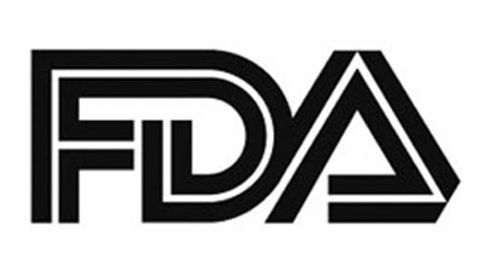FDA Approves Naxitamab for Treatment of Relapsed/Refractory High-Risk Neuroblastoma
The FDA has granted approval to the naxitamab as treatment of pediatric patients 1 year of age and older and adult patients with relapsed or refractory high-risk neuroblastoma in the bone or bone marrow who have demonstrated a partial response, minor response, or stable disease on prior treatment.

The FDA has granted approval to the naxitamab (Danyelza) as treatment of pediatric patients 1 year of age and older and adult patients with relapsed or refractory high-risk neuroblastoma in the bone or bone marrow who have demonstrated a partial response, minor response, or stable disease on prior treatment., announced Y-mAbs Therapeutics, Inc, in a press release.1
The approval was granted based on results from 2 studies. One study was the phase 2 study (201, NCT03189706) and the second was also a phase 2 study (12-30, NCT03363373).
“We believe that Danyelza in combination with GM-CSF is a much-needed treatment for patients with relapsed/refractory high-risk neuroblastoma in the bone or bone marrow who have historically not had approved treatments available," said Claus Moller, chief Executive officer, Y-mAbs Therapeutics, Inc.
In the 201 trial, patients with neuroblastoma received a naxitamab-based chemoimmunotherapy to assess the efficacy and safety of naxitamab. The primary end point of the study was the number of patients with treatment-related adverse events (TRAEs), and the co-primary end point was objective response rate (ORR) based on 4 cycles of treatment.2
Results for the study were presented during the International Society of Pediatric Oncology Annual Virtual Congress. A total of 36 patients were evaluable for the co-primary end points of the study. For each cycle of treatment, the patients were given the naxitamab-based chemoimmunotherapy. Within the regimen, irinotecan was administered at 50 mg/m2 daily intravenously (IV). Patients received temozolomide 150 mg/m2 daily by IV or orally on days 1 to 5. Naxitamab was administered at a dose level of 2.25 mg/kg daily by IV over 30 minutes, on days 2, 4, 8 and 10. Finally, GM-CSF 250 mg/m2 was given daily by subcutaneously infusion on days 6 to 10.
The TRAEs observed in the study included myelosuppression and diarrhea, which were expected with the irinotecan plus temozolomide combination. Patients also experienced pain and hypertension, as was expected with naxitamab. Notably, no other grade 2 or higher TRAEs were observed.
Following 2 cycles of treatment with naxitamab-based chemoimmunotherapy, the study showed early responses in 47% of the evaluable patient population. Of the responses achieved, 11 were complete responses (CR), 6 were partial responses, and 10 patients had stable disease. Before cycle 2 evaluation was completed, disease progression occurred in 25% of the patients progressed.
At 1-year, the progression-free survival (PFS) rate of 37.0% (95% CI, 21.8%, 62.9%), was observed with the naxitamab combination. The median time to progression 9.2 months. In addition, the 1-year overall survival observed was 55% (95% CI, 39.4%-76.9%).
Overall, the 201 study showed that high-dose naxitamab-based chemoimmunotherapy is a safe and effective, particularly in patients with chemotherapy-resistant high-risk neuroblastoma.
Further, positive results from the 12-30 study were announced in October 2019. The data show an ORR of 78% in the subgroup of patients with primary refractory high-risk neuroblastoma (n = 28). Treatment with naxitamab in this group also led to a 2-year progression-free survival (PFS) rate of 50%.
Another subgroup of patients with relapsed neuroblastoma that is resistant to salvage therapy (n = 30), the ORR achieved was 37%. This subgroup achieved a 2-year PFS rate of 36%. Finally, the subgroup of patients with high-risk neuroblastoma who are in second or later complete remission (n = 44), the 2-year PFS rate was 52%. Patients in this subgroup were not evaluable for ORR.
References:
1. FDA Approves Y-mAbs’ DANYELZA® (naxitamab-gqgk) for the Treatment of Neuroblastoma. News release. Y-mAbs Therapeutics, Inc. November 25, 2020. Accessed Novembe 25, 2020. https://bit.ly/378009V
2. Y-mAbs announces update on naxitamab and omburtamab in neuroblastoma. News release. Y-mAbs Therapeutics, Inc. October 16, 2020. Accessed November 30, 2020. https://bit.ly/35G3yRe
3. Mora J, Castañeda A, Flores M, et al. Naxitamab-based chemoimmunotherapy for resistant high-risk neuroblastoma: preliminary results of hits treatment. Presented at: International Society of Pediatric Oncology Virtual Annual Congress; October 14–17, 2020
FDA Approves FoundationOne CDx as Companion Diagnostic for Tovorafenib in Pediatric Low-Grade Glioma
January 17th 2025FoundationOne CDx is now FDA-approved as the first companion diagnostic for tovorafenib, enabling targeted treatment for relapsed/refractory pediatric low-grade glioma with BRAF mutations or rearrangements.
Read More